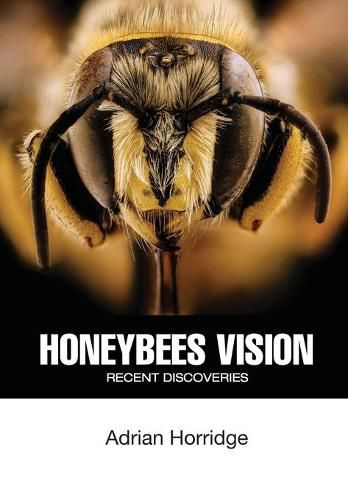Readings Newsletter
Become a Readings Member to make your shopping experience even easier.
Sign in or sign up for free!
You’re not far away from qualifying for FREE standard shipping within Australia
You’ve qualified for FREE standard shipping within Australia
The cart is loading…






This title is printed to order. This book may have been self-published. If so, we cannot guarantee the quality of the content. In the main most books will have gone through the editing process however some may not. We therefore suggest that you be aware of this before ordering this book. If in doubt check either the author or publisher’s details as we are unable to accept any returns unless they are faulty. Please contact us if you have any questions.
Professor Adrian Horridge has thoroughly enjoyed a long and productive career in scientific research. At 17 he won a scholarship to St John’s College Cambridge, where he spent 10 years, from student to a fellowship, ending in the Zoology Department working with new techniques of recording from nerve cells. Some of this time was spent at the Naples Marine Laboratory and at the Dept. of Structures in the Royal Aircraft Establishment. at Farnborough, designing reinforced plastic structures, like rockets and pilot ejector seats, for the military.
In 1956, he took a lectureship in Zoology at St Andrew’s, Scotland, from where he collaborated with Prof Ted Bullock on a 2-volume book on The Structure and Function of the Nervous Systems of Invertebrates , an enormous project that took him and family to California for 2 years.
His research group at the Gatty Marine Laboratory at St Andrews concentrated on all aspects of the arthropod compound eye, on which he subsequently published about 250 papers and book chapters. In 1969, he was elected to the Royal Society, and that year became one of four Founder Professors of Biological Sciences in the Australian National University, where the work on insect vision continued.
His recent book on The Discovery of a Visual System. The Honeybee is a summary of new findings, based on hundreds of hours of training bees and testing them to see what features they really detect. The results show that parts of all textbooks on this topic will have to be revised. Bees see neither colours nor shapes of flowers.
$9.00 standard shipping within Australia
FREE standard shipping within Australia for orders over $100.00
Express & International shipping calculated at checkout
This title is printed to order. This book may have been self-published. If so, we cannot guarantee the quality of the content. In the main most books will have gone through the editing process however some may not. We therefore suggest that you be aware of this before ordering this book. If in doubt check either the author or publisher’s details as we are unable to accept any returns unless they are faulty. Please contact us if you have any questions.
Professor Adrian Horridge has thoroughly enjoyed a long and productive career in scientific research. At 17 he won a scholarship to St John’s College Cambridge, where he spent 10 years, from student to a fellowship, ending in the Zoology Department working with new techniques of recording from nerve cells. Some of this time was spent at the Naples Marine Laboratory and at the Dept. of Structures in the Royal Aircraft Establishment. at Farnborough, designing reinforced plastic structures, like rockets and pilot ejector seats, for the military.
In 1956, he took a lectureship in Zoology at St Andrew’s, Scotland, from where he collaborated with Prof Ted Bullock on a 2-volume book on The Structure and Function of the Nervous Systems of Invertebrates , an enormous project that took him and family to California for 2 years.
His research group at the Gatty Marine Laboratory at St Andrews concentrated on all aspects of the arthropod compound eye, on which he subsequently published about 250 papers and book chapters. In 1969, he was elected to the Royal Society, and that year became one of four Founder Professors of Biological Sciences in the Australian National University, where the work on insect vision continued.
His recent book on The Discovery of a Visual System. The Honeybee is a summary of new findings, based on hundreds of hours of training bees and testing them to see what features they really detect. The results show that parts of all textbooks on this topic will have to be revised. Bees see neither colours nor shapes of flowers.